
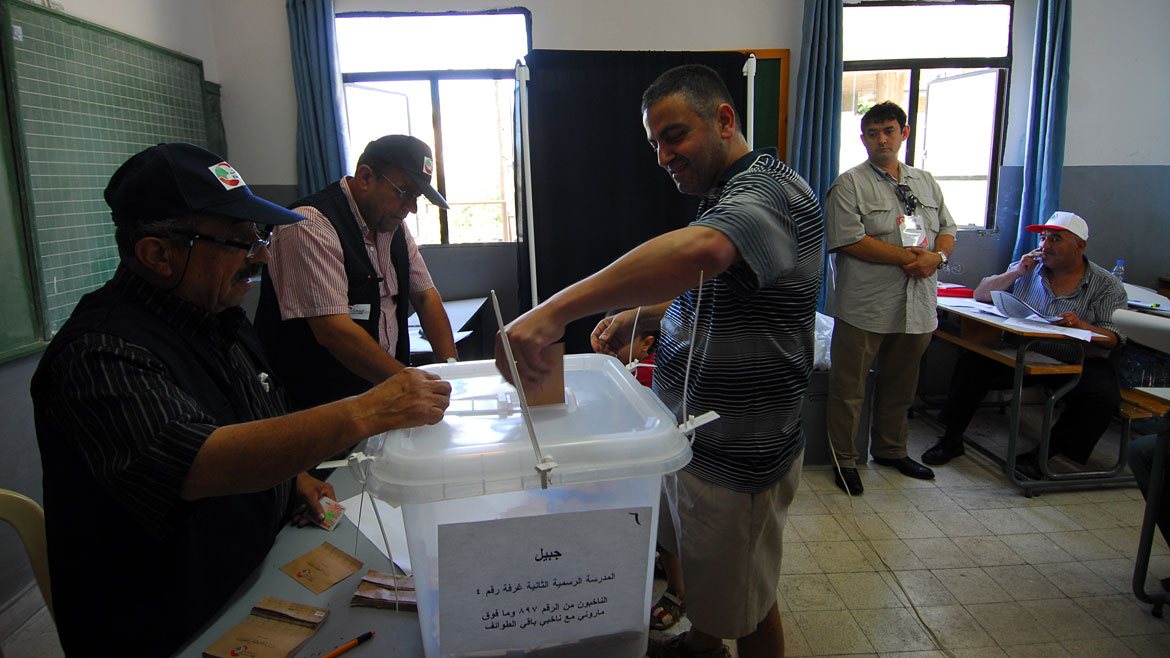
Lebanon held successful parliamentary elections on June 7, 2009, the results of which were accepted peacefully by both sides. The Carter Center deployed 60 observers from 23 countries to assess voting, counting, and tabulation processes, led by former U.S. President Jimmy Carter and former Prime Minister of Yemen Abdul-Kareem al–Eryani. All Photos: The Carter Center | Carter Center Slideshow (2009)
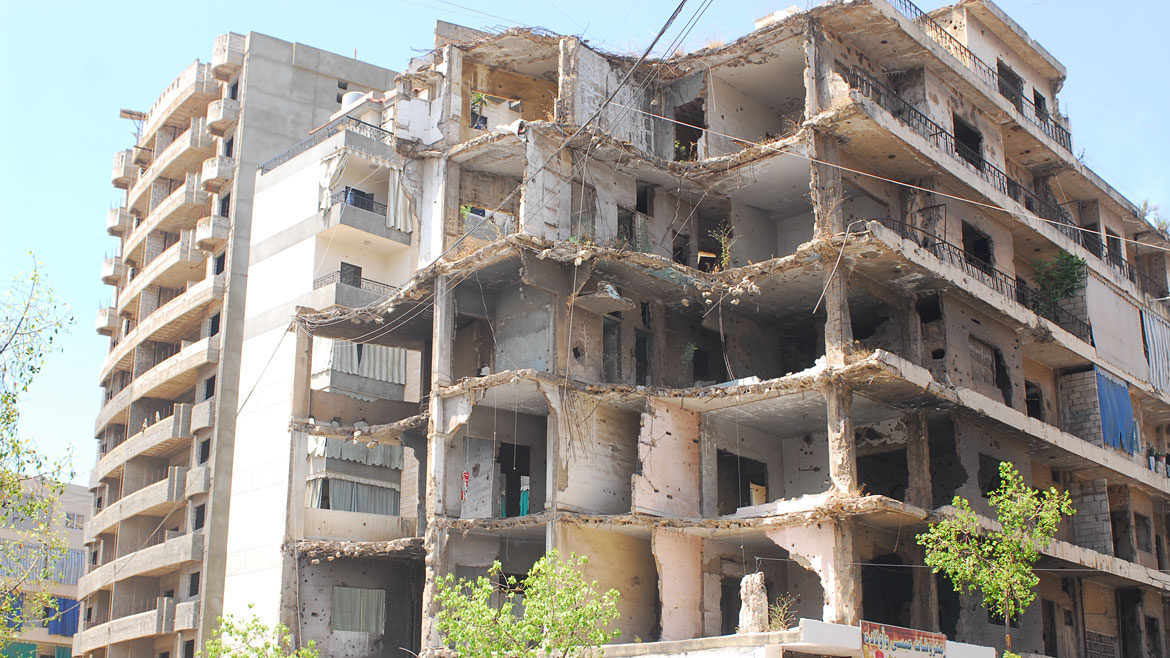
In Lebanon, a country marked by recent civil strife and political instability, political parties are usually tied to religious or ethnic affiliations. Though the country is now peaceful, the fear of violence and political rivalries remain under the surface. All Photos: The Carter Center
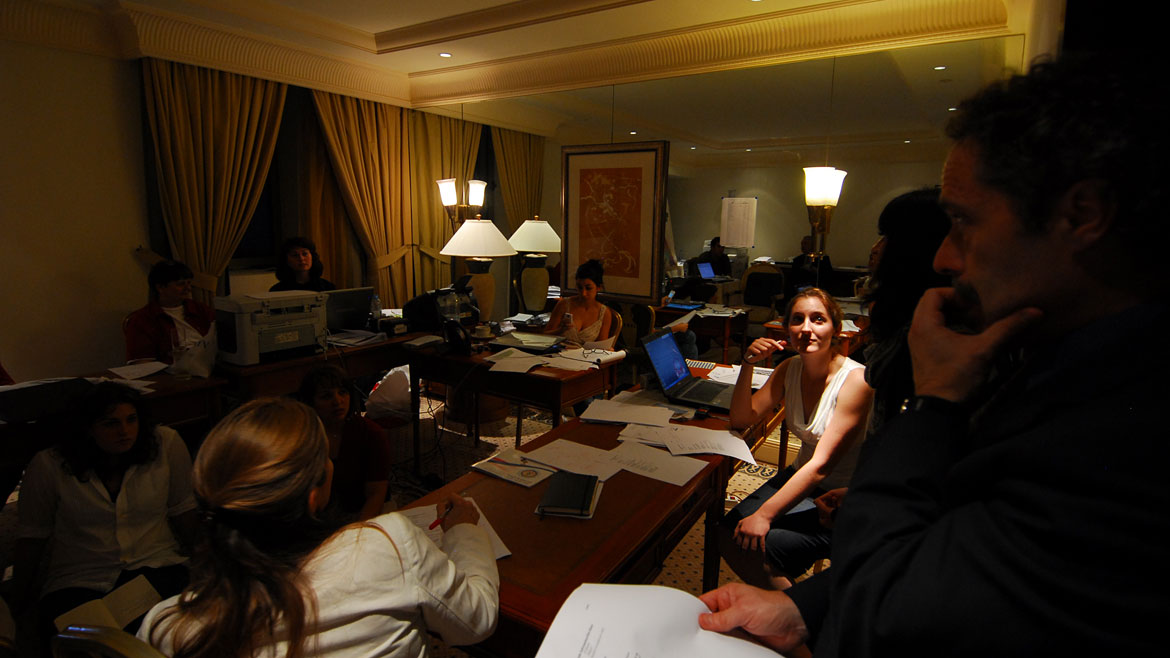
The Carter Center opened an office in Beirut in late January 2009 and launched its election observation mission in early April with the deployment of several long–term election observers. In the weeks before the June 7 election, Atlanta–based staff joined local staff to prepare for the observation mission. All Photos: The Carter Center
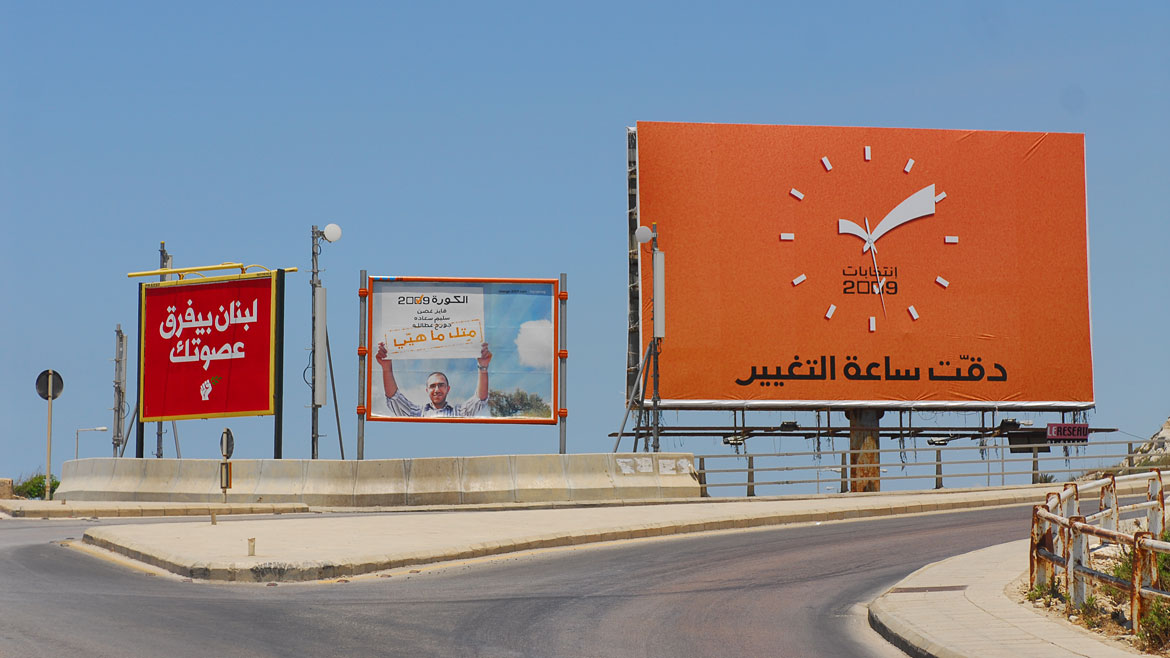
702 candidates competed for Lebanon’s 128 parliamentary seats in 26 districts. In a confessional system more than 65 years old, seats must be divided equally between Christians and Muslims. The system gives Sunni Muslims and Shia Muslims each 27 seats, eight for the Druze, and two for Alawites. On the Christian side, 34 seats are given to Maronites, 14 reserved for Greek Orthodox, eight seats for Catholics, six for Armenians, and two for other Christian minorities. All Photos: The Carter Center
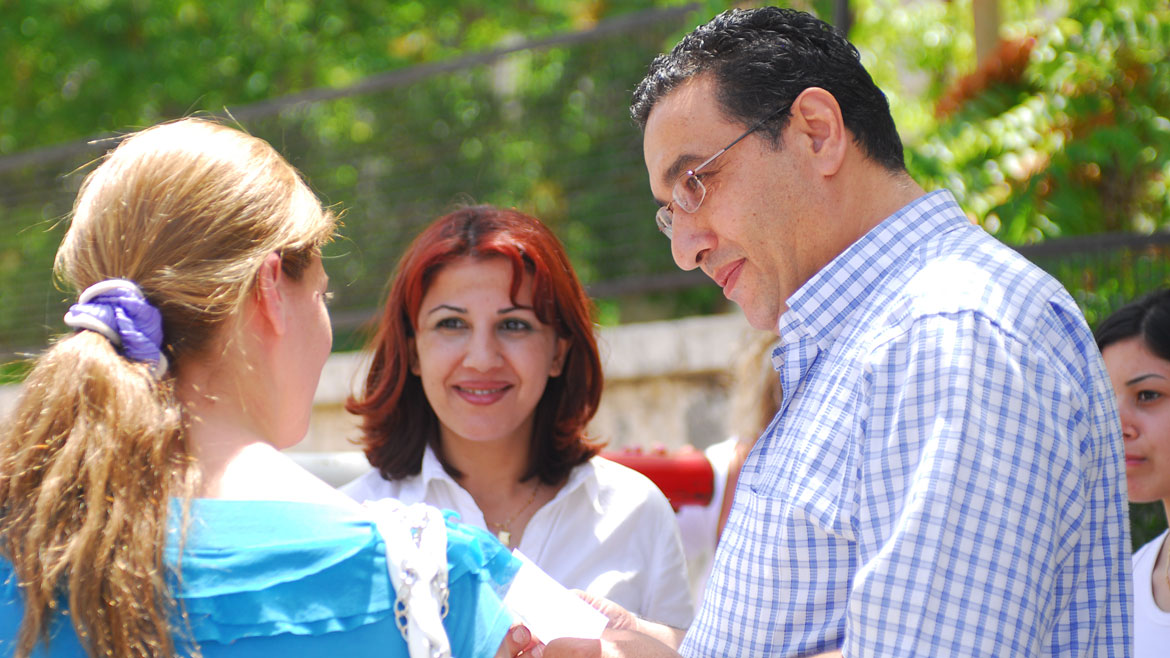
Not everyone agrees with the division of parliamentary seats by religious affiliation. Pierre Daher Haddad was a Christian running as an independent for a seat designated to a Muslim. He ran as a protest to the confessional system. Despite recent efforts to somewhat lessen the impact of the confessional system on the electoral process, the right to be elected is not fully protected by Lebanon’s current system. All Photos: The Carter Center

There are two main political alliances in Lebanon, the March 14 group (Sunnis and others), with Saudi Arabia and U.S. backing, and the March 8 group (Shi’a and others), with Iran and Syria backing. This sign is for the March 14 Future Movement party and shows former Prime Minister Rafik Hariri, whose assassination in 2005 led to the Cedar Revolution that ended the nearly 30–year Syrian military presence in Lebanon and also to the evolution of the March 8 and March 14 alliances. His son Saad Hariri ran in the June 7 elections and was recently chosen as the new prime minister. All Photos: The Carter Center
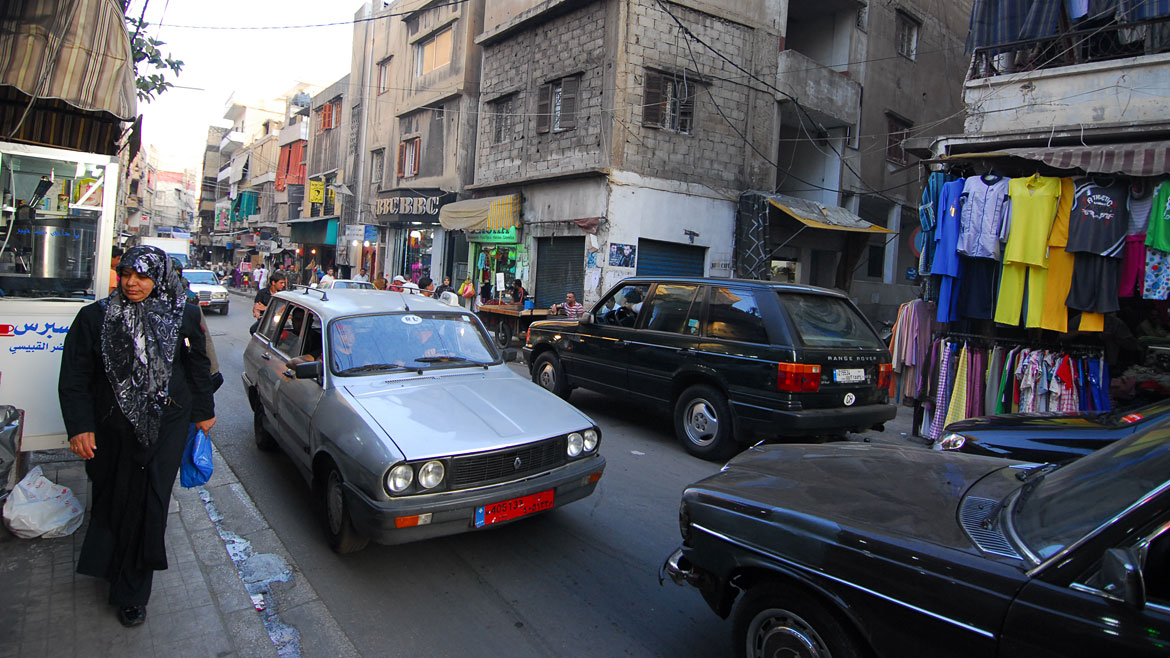
South Beirut, which is a mostly Shia area, was heavily damaged in the 2006 war with Israel. It is a very densely populated and tight knit community that strongly supports the March 8 alliance, including Hezbollah. All Photos:The Carter Center
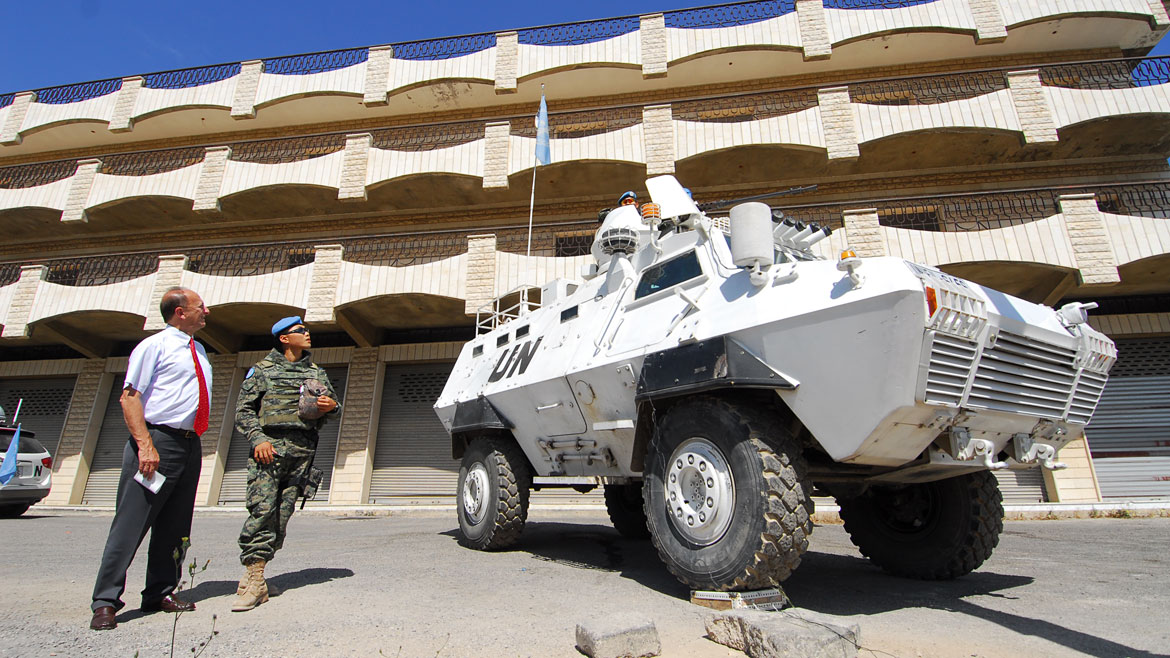
March 8 candidates also prevailed in the June 7 elections throughout Southern Lebanon, which borders Israel and is patrolled by U.N. forces. All Photos: The Carter Center
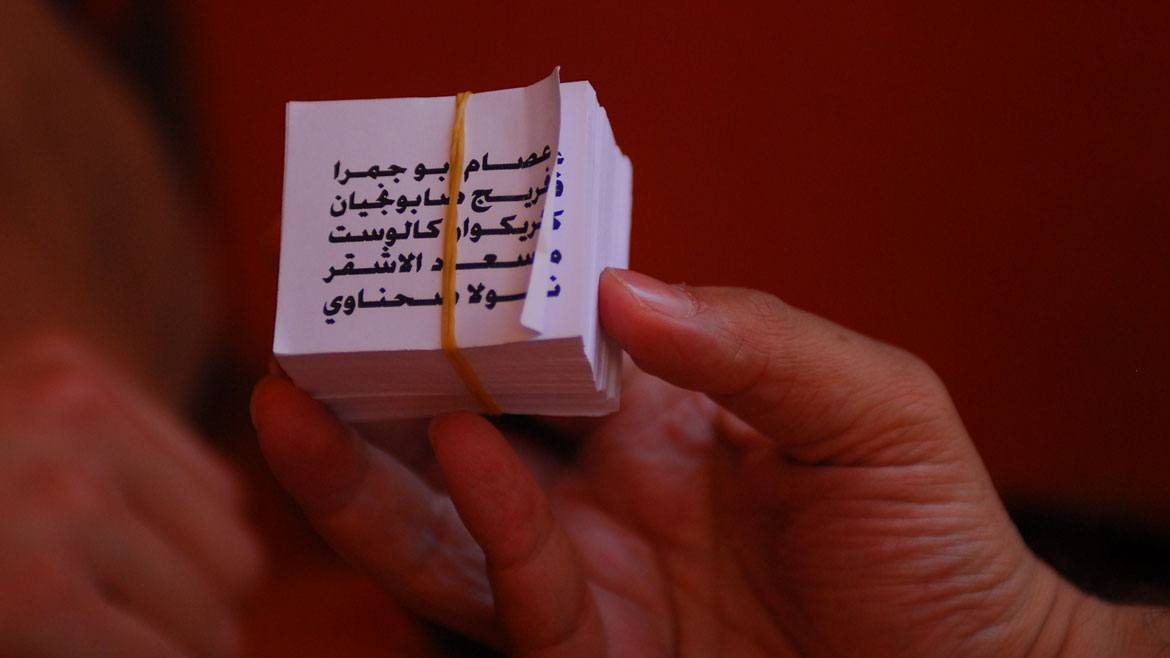
Lebanon does not use official, standardized, pre-printed ballots. Instead, voters could use a pre–printed ballot provided by political coalitions that they could cast as is, or could cross out the listed candidates and write in their own choice. Alternatively, voters could write their preferences in pencil on a blank piece of paper provided inside the voter booth. Parties can print the ballots in many different styles and fonts and then give certain versions to certain families or sets of people such that the parties can then see how many of which ballot styles were used, which allows them in some instances to link ballots to certain voters or families, thus undermining the fundamental right of secrecy of the ballot. All Photos: The Carter Center
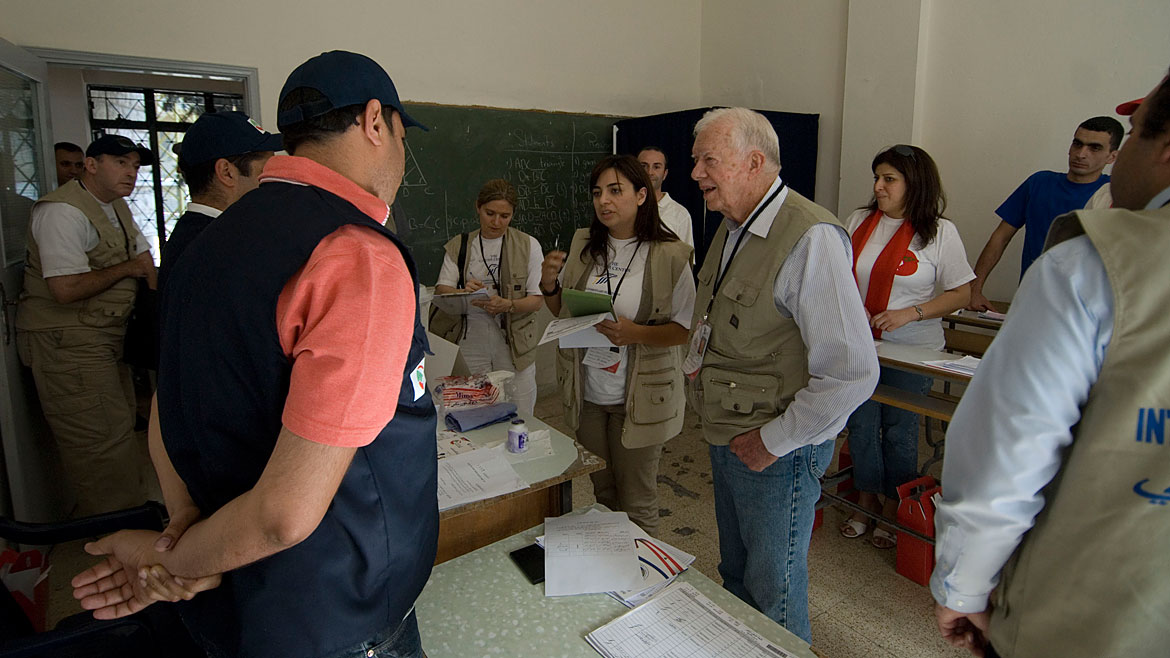
On election day, Carter Center observers visited more than 350 polling stations in all districts of the country. This was Lebanon’s first single–day voting process. Previous elections were held on four successive Sundays. All Photos: The Carter Center
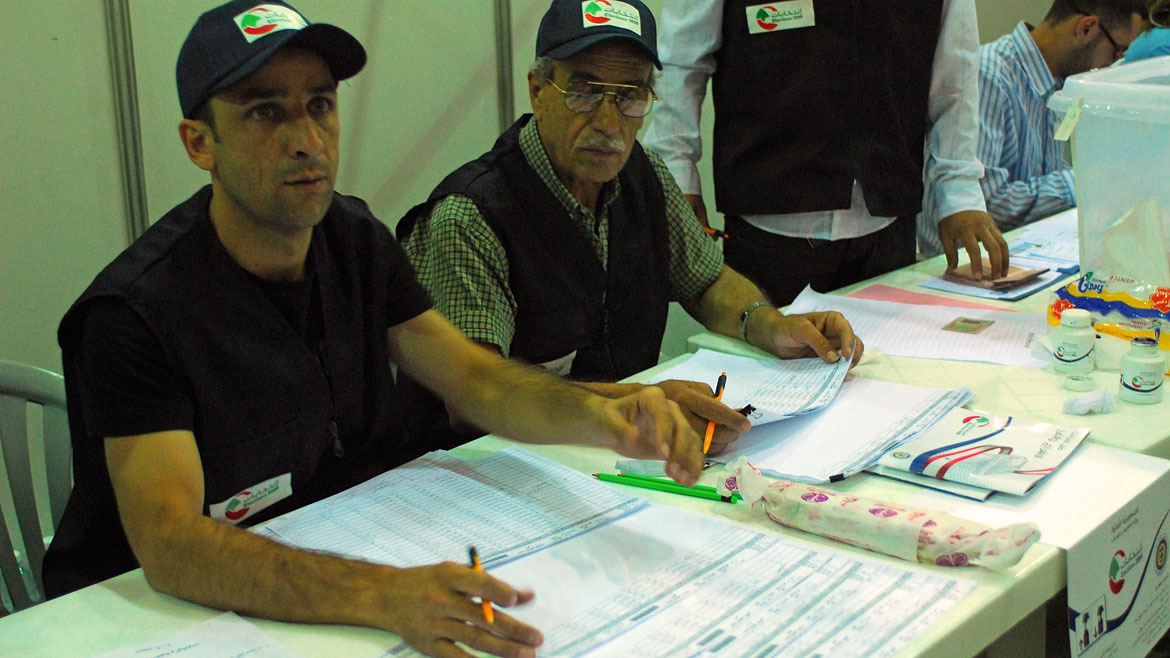
The Carter Center commended the Minister of Interior and Municipalities for conducting intensive poll worker trainings for the more than 11,000 polling officials employed on election day, publishing reference manuals for poll workers and observers, and establishing a 'hotline' to respond to the queries of polling officials and voters. All Photos: The Carter Center
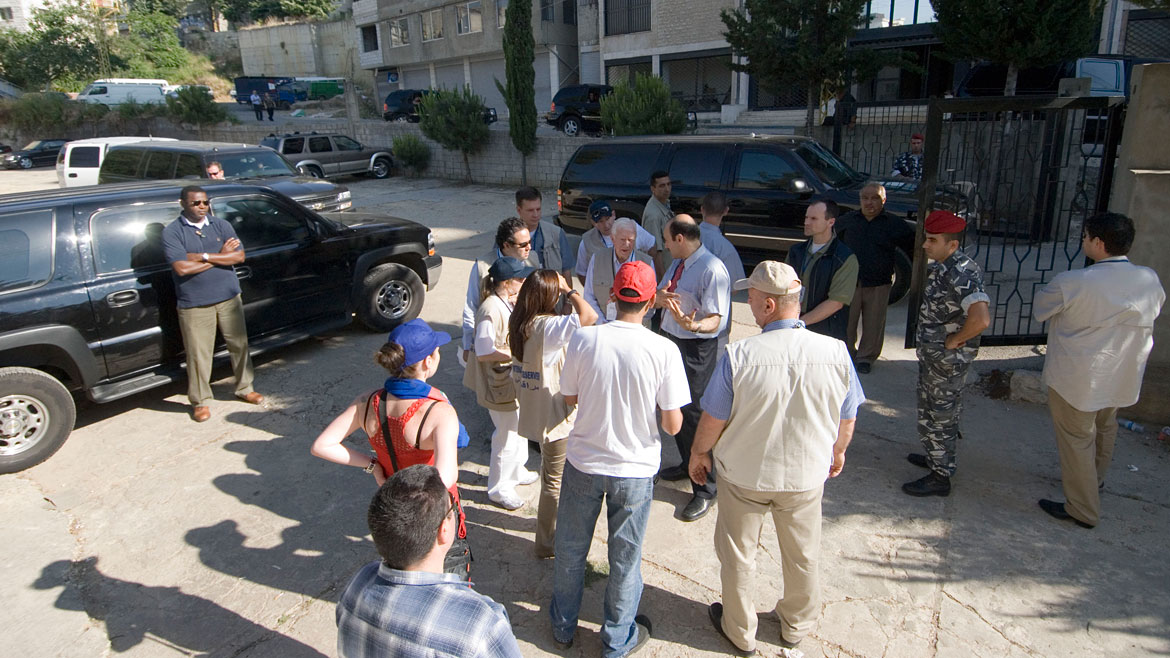
At polling stations in areas throughout the country though, Carter Center observers reported that several parties had set up temporary offices in the direct vicinity of polling stations, a violation of campaign regulations that had the potential to influence voters. All Photos: The Carter Center
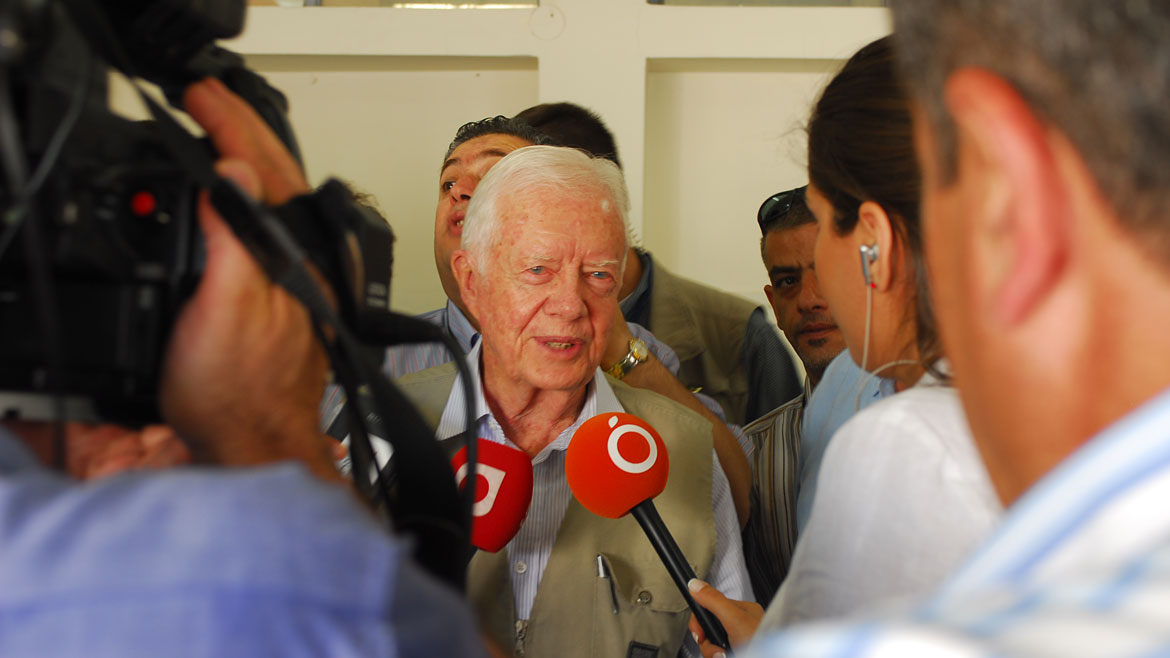
President and Mrs. Carter visited 28 polling stations on election day, and the media very eagerly clamored to get his thoughts on the voting process. All Photos: The Carter Center
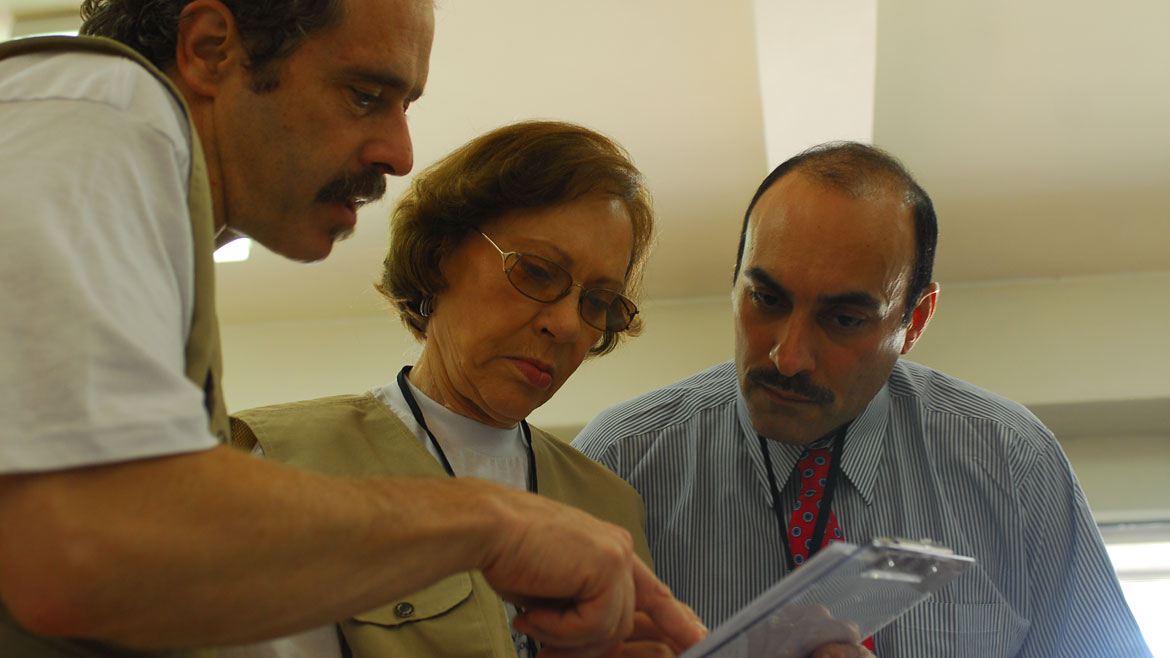
David Carroll, director of the Carter Center’s Democracy Program, discusses observations at a Beirut polling station with Rosalynn Carter and her interpreter. All Photos: The Carter Center
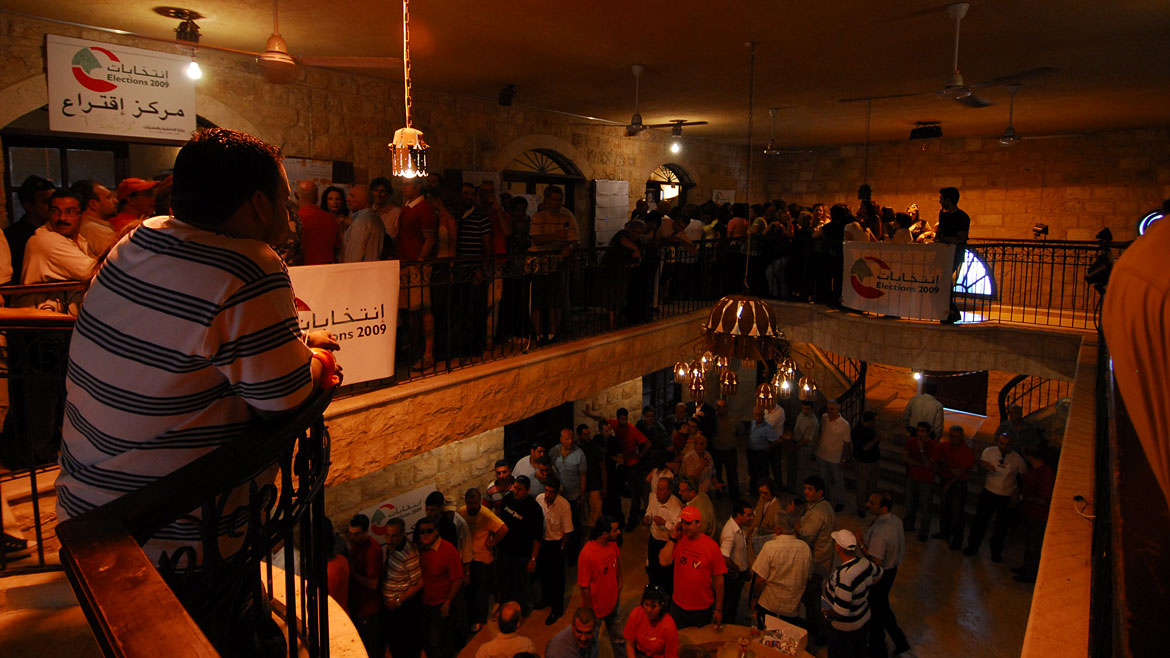
The procedure of only allowing as many voters into the polling station as there were polling booths caused delays in the voting process and long lines of voters waiting to enter the station, leading to increased tensions in some places. Voters waited for several hours in some polling station observed by the Center. All Photos: The Carter Center
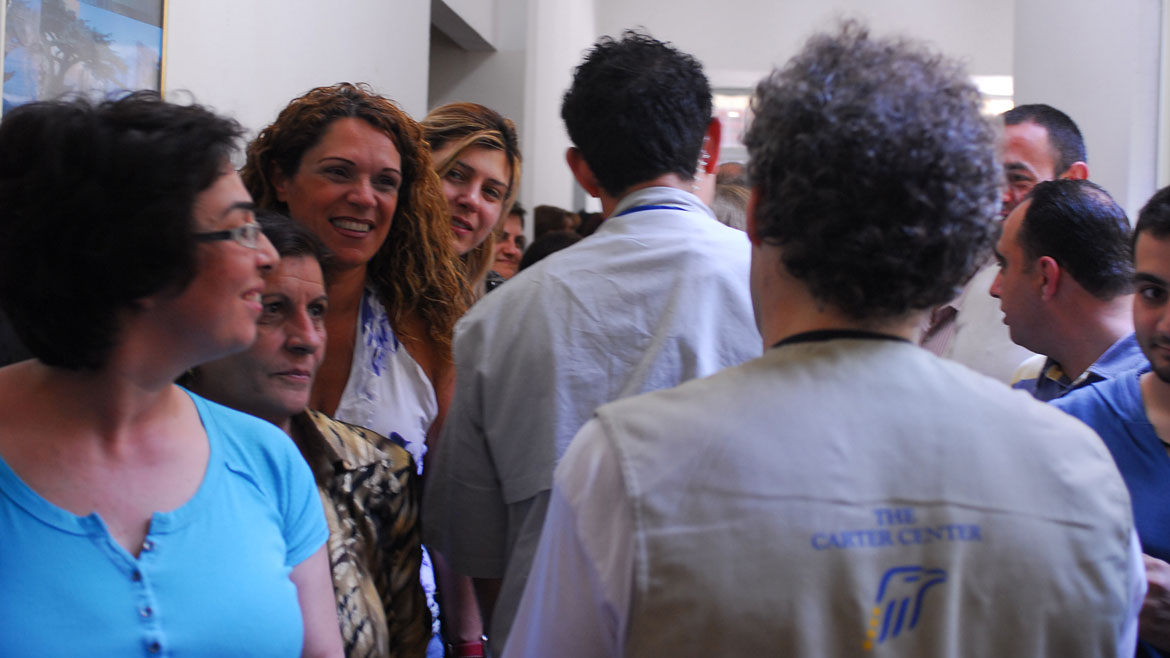
In response to these difficulties, the Minister of the Interior and Municipalities announced that additional voting booths would be provided to polling stations as needed. However, this instruction does not appear to have been consistently transmitted to polling station staff, and many polling stations still had long lines. All Photos: The Carter Center
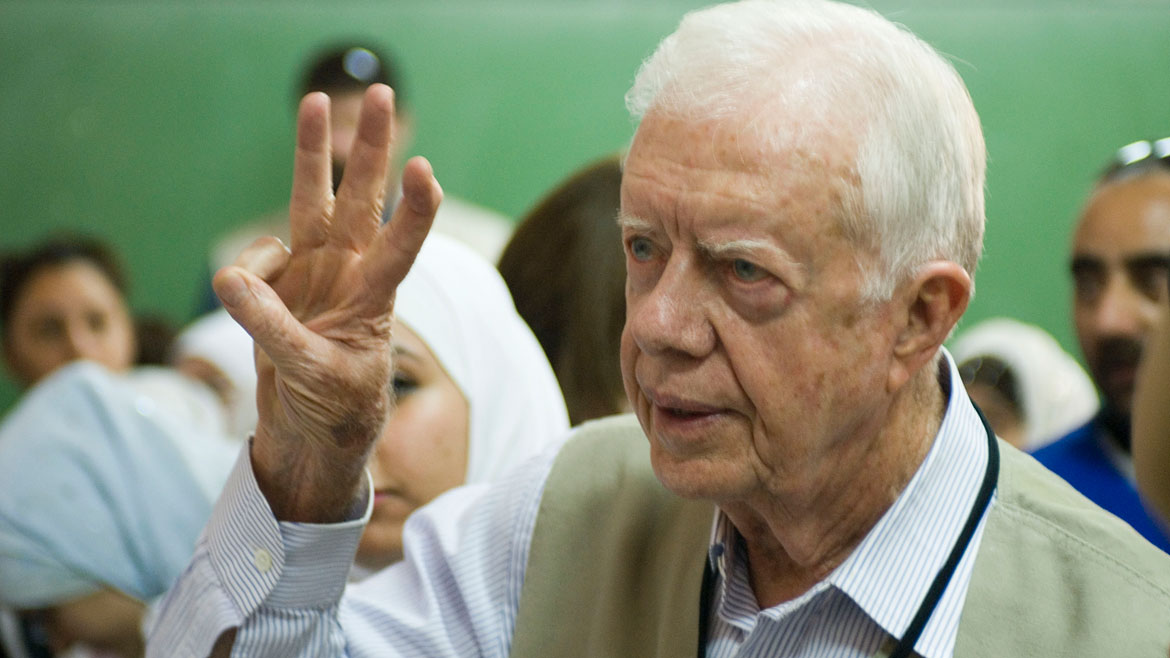
Carter Center observers noted a number of other procedural shortcomings on election day that resulted in long lines at many polling stations. In many places, the only effective polling staff were those appointed by the Minister of Interior and Municipalities. This lack of sufficiently trained staff hindered efficiency and resulted in overcrowding. Here, President Carter reminds polling officials that that they have agreed to allow three voters in at a time. All Photos: The Carter Center
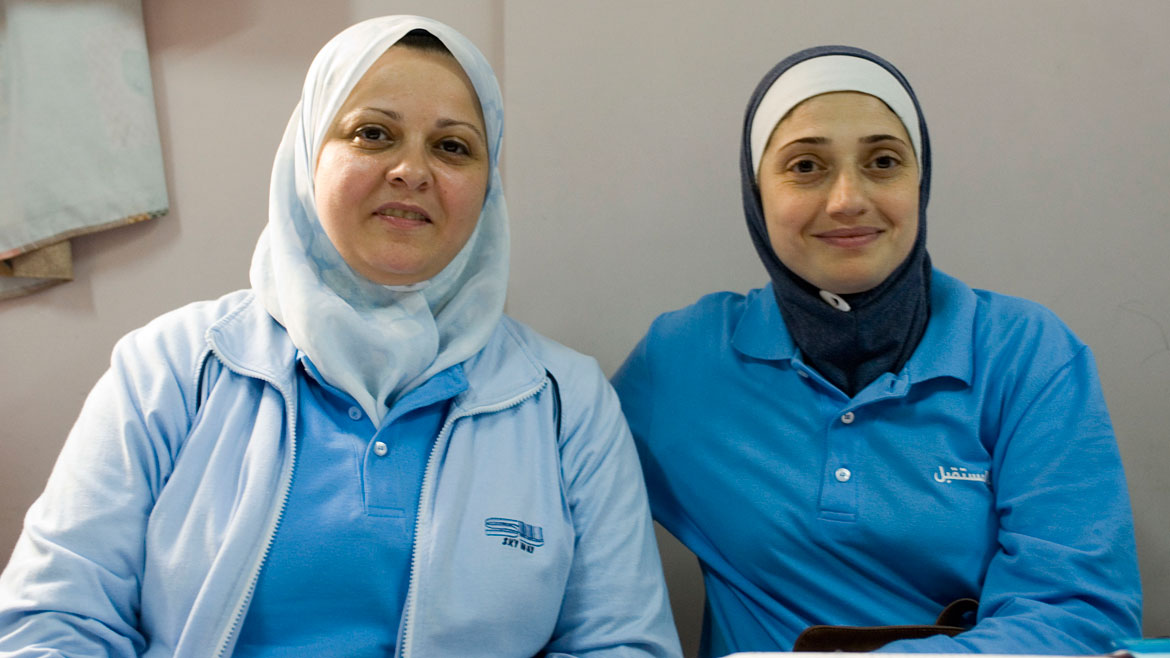
While the low level of participation by women was of significant concern, The Carter Center commended the initiative of the Minister of Interior and Municipalities to include women as polling station staff for the first time in Lebanon's history. Some 2,000 women, (15 to 20 per cent of the more than 11,000 polling staff), were identified through the Ministry of Education to perform the duties and responsibilities of clerks. All Photos: The Carter Center
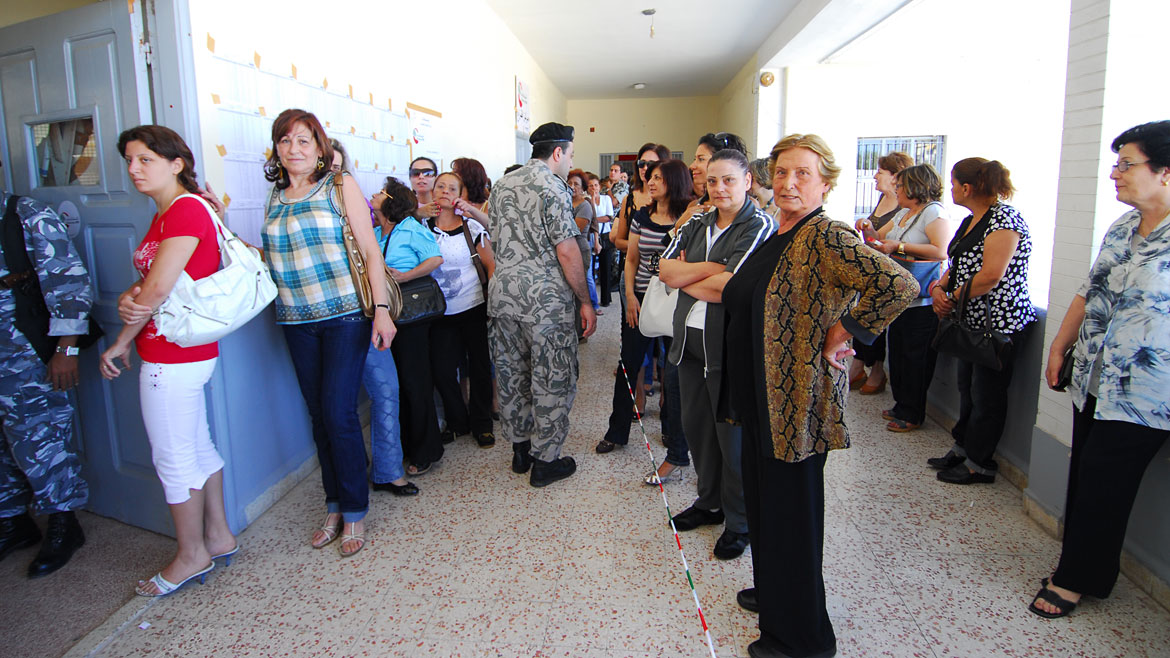
Lebanese women obtained the right to vote and run for election in 1953. While women are well–represented within the membership of some political parties, the leadership of parties in Lebanon is predominantly male. While there are no legal obstacles to the participation of women in elections, de facto barriers remain. Women were significantly underrepresented on the candidate lists, with only 12 women contesting seats out of 587 official candidates. The visibility of female candidates in the electoral campaign also was low, reflecting, in part, the lack of positive measures to promote women’s participation within parliament that would better ensure compliance with international obligations for women’s political equality. All Photos: The Carter Center
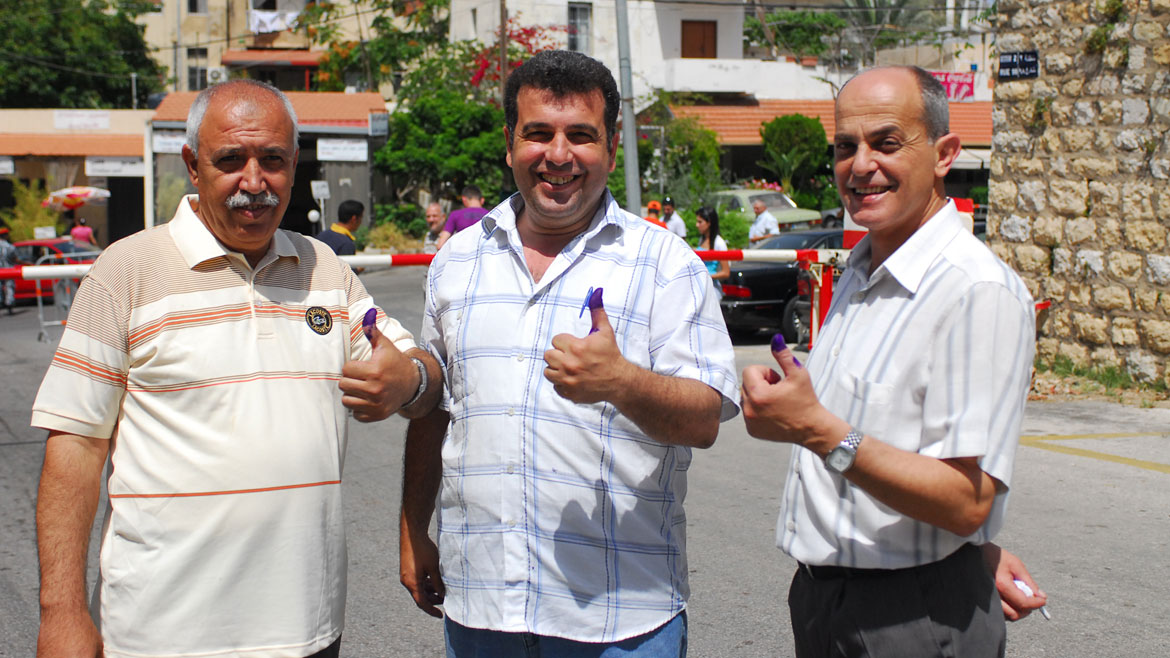
The turnout for the June 7 parliamentary poll was 54 percent, the highest percentage of Lebanese voters since the 1975–90 civil war. All Photos: The Carter Center
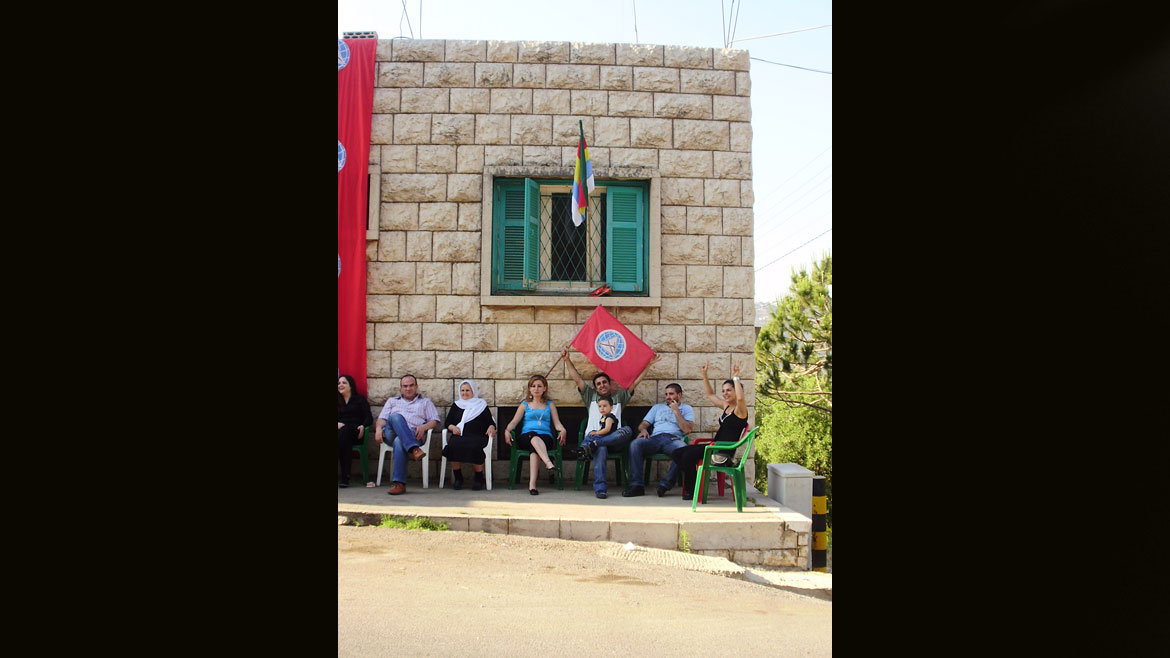
The Carter Center commended the Lebanese people and the electoral authorities for the successful conduct of the parliamentary elections and noted that while the process fell short of several of Lebanon's international commitments, especially regarding full protection for the secrecy of the ballot, it was conducted with enhanced transparency and in accordance with Lebanon’s new consensual electoral law and regulations. All Photos: The Carter Center
Please sign up below for important news about the work of The Carter Center and special event invitations.
